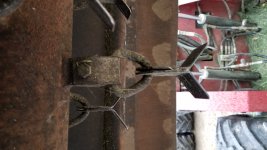vvanders
Platinum Member
I look at the construction of a flail cutter and wonder just how badly those blades will fare against a 4 stone? For rough work, I still think a rotary cutter is best.
I've hit everything from 1"-8" rocks with our flair mower and the blades just bound off of it since they weight almost nothing. Just sounds like running over something with a dremel tool :laughing:.

